
Cuno von Uechtritz-Steinkirch (3 July 1856, Breslau - 29 July 1908, Berlin) was a German sculptor.

Cuno von Uechtritz-Steinkirch (3 July 1856, Breslau - 29 July 1908, Berlin) was a German sculptor.
Since his youth he had pursued art as a hobby, but did not decide to become a sculptor until he was twenty-one. The occasion was a figure he made of the writer Karl von Holtei, which impressed Kaiser Wilhelm I so much that he bought it on the spot. In 1878 and 1879, Uechtritz travelled throughout Italy to see the old masters first hand. Upon his return, he began taking lessons in the studios of Carl Friedrich Echtermeier, a former Master Student of Ernst Julius Hähnel. Later, he met Hähnel and became his student.
He completed his studies at the Academy of Fine Arts, Vienna, under Viktor Oskar Tilgner, who taught him how to make polychrome figures. His first work in that style (Piper with Monkey) was acquired by the National Gallery in 1889. He remained with Tilgner as an employee until 1887, when he opened his own studios in Berlin. [1]
His financial breakthrough came in 1897 with an allegorical figure group called Die Krone als Hort des Friedens (The Crown as a Haven of Peace), which fit in so well with the contemporary political propaganda that Kaiser Wilhelm II ordered it to be made in marble for the Herrenhaus. This work led to him receiving one of the coveted commissions for the Siegesallee (Victory Avenue) project. The Kaiser was pleased with his contribution and appointed him a Professor in 1899. Although this monumental work made his reputation, lighter, more imaginative pieces, especially fountains, were his true forte. [1]
In 1907, he was one of the signatories on a letter addressed to Chancellor Bernhard von Bülow, stating that the market for art in Germany was oversaturated and suggesting that a greater effort be made to sell art in the United States, despite that country's preference for works in the French style. [1] It is, perhaps, no coincidence that the American sculptor Harriet Whitney Frishmuth was one of his students at the time.
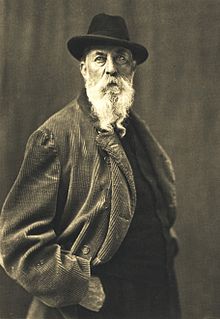
Reinhold Begas was a German sculptor.
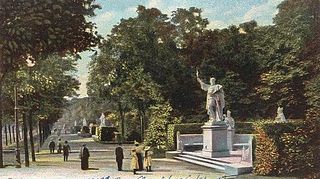
The Siegesallee was a broad boulevard in Berlin, Germany. In 1895, Kaiser Wilhelm II ordered and financed the expansion of an existing avenue, to be adorned with a variety of marble statues. Work was completed in 1901.

Harro Magnussen was a German sculptor.

Karl Begas was a German sculptor. To distinguish him from his father, he is often referred to as "the younger".

Adolf Brütt was a German sculptor. He was the founder of the Weimarer Bildhauerschule and its accompanying bronze foundry.
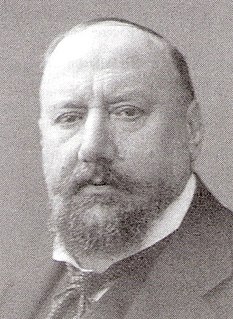
Emil Friedrich Franz Maximilian Graf von Schlitz genannt von Görtz was a German sculptor, Hessian nobleman, cultural policymaker and confidant of Kaiser Wilhelm II.

Max Baumbach was a German sculptor.
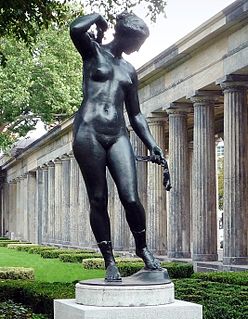
Reinhold Carl Thusmann Felderhoff was a German sculptor.

Joseph Johann Ludwig Uphues was a German sculptor.

Eugen Boermel, also spelled Börmel was a German sculptor, writer and inventor.
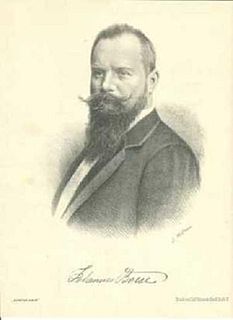
Johannes Boese, also spelled Böse, was a German sculptor and art professor.
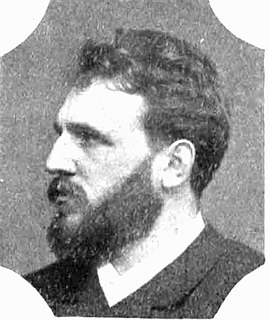
Peter Christian Breuer was a German sculptor.

Ludwig Cauer was a German sculptor.
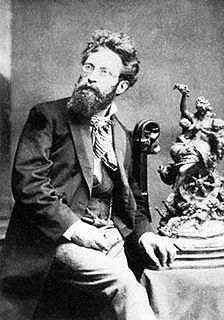
Gustav Heinrich Eberlein was a German sculptor, painter and writer.

Johannes Gottfried Götz was a German sculptor.

August Friedrich Johann Kraus was a German sculptor.

Albert August Karl Manthe was a German sculptor.
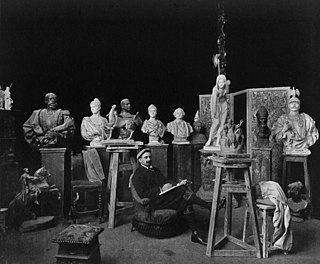
Walter Schott was a German sculptor and art professor.

Martin Wolff was a German sculptor.

Max Unger was a German sculptor.
| Wikimedia Commons has media related to Cuno von Uechtritz-Steinkirch . |